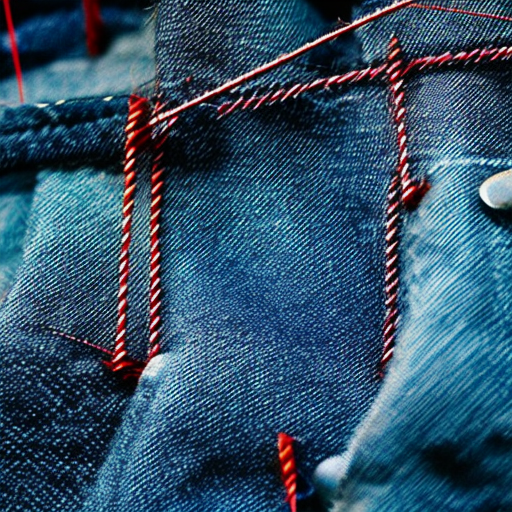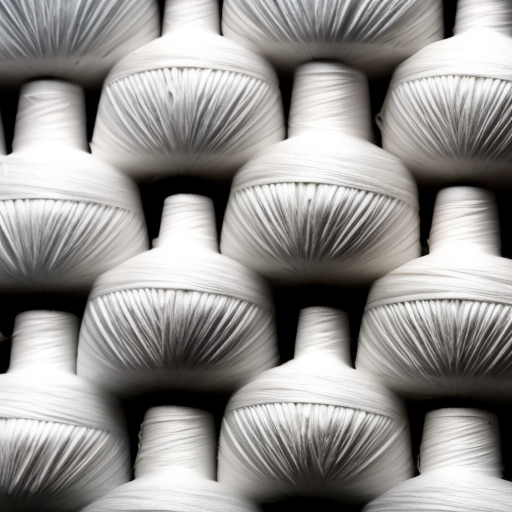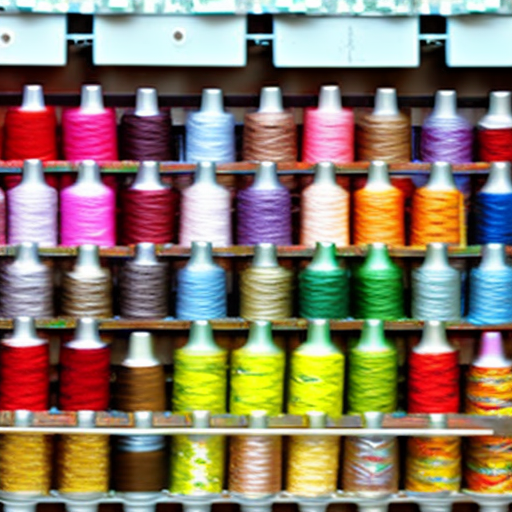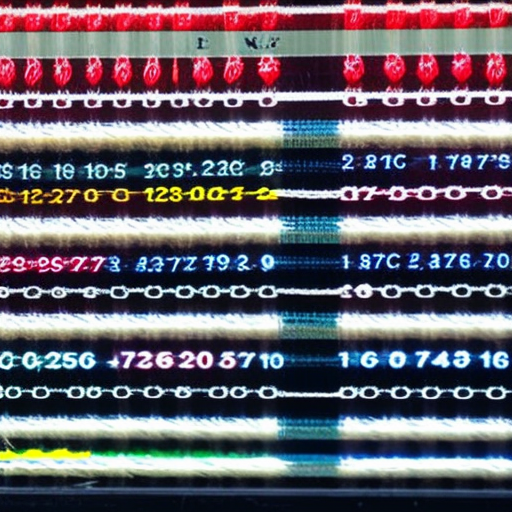
Jeans, a staple item in nearly everyone’s wardrobe, are known for their durability and versatility. However, one crucial element that contributes to their strength is often overlooked – the threads used in sewing them together. Sewing jeans threads play a vital role in ensuring the longevity and quality of the final product.

The Importance of Strong Threads
Jeans threads need to withstand constant stretching, pulling, and stress. They also play a significant role in the aesthetic appeal of the jeans, as the contrasting thread colors are often visible on the seams and pockets.
Traditionally, jeans were sewn using heavyweight cotton-wrapped polyester threads. This combination provides the required strength and durability without sacrificing flexibility. However, today, there are various alternative thread materials available, including nylon, rayon, and even Kevlar, each with their unique properties.
Selecting the Right Thread
The choice of thread depends on several factors, including the fabric weight, machine type, and desired aesthetic. For heavy-duty denim jeans, it is recommended to use at least a 30 wt or 40 wt thread. This weight classification ensures the thread is strong enough to withstand the stress caused by frequent wear and washing.
Thicker threads also contribute to the distinct feature of “contrast stitching,” wherein a contrasting color thread is used to sew the seams, pockets, and details. This contrast adds visual interest to the jeans and highlights their construction details. Such threads are available in various colors, allowing for creative customization.
The Sewing Process
When sewing jeans, it is crucial to use appropriate sewing techniques. Strong and secure seams are essential to prevent them from unraveling or tearing apart under strain. Most jeans are sewn with a combination of lockstitch and chain stitch. Lockstitch creates a secure, straight stitch, while chain stitch offers flexibility and allows the seam to stretch without breaking.
The right needle size and type are also important to prevent thread breakage and puckering. A jeans needle, specifically designed for denim and other heavyweight fabrics, helps pierce through multiple layers without causing damage to the thread or fabric.

In Conclusion
Sewing jeans threads require careful consideration and selection to ensure the durability, strength, and aesthetic appeal of the final product. The right combination of thread material, weight, and color, along with the appropriate sewing techniques, elevate the quality and longevity of jeans.
Sources: Thread Magazine,
Sew It Works,
ThreadTrace





“Super informative and useful! I hadn’t even thought of using threads for a sewing project like this.” Great idea, I’ll definitely be trying it!
“What a great way to add a nice touch to any project! I love it.”
Nice idea! It’s great to see creative concepts put to use in a sewing project like this. It’s definitely worth trying out!
“This looks really cool and could totally transform the look of the jeans!” Absolutely! I never realized how much of a difference threads can make. Very inspiring!